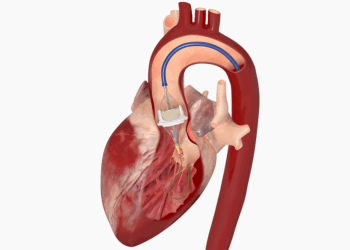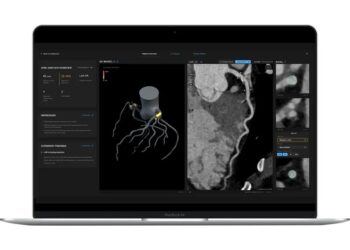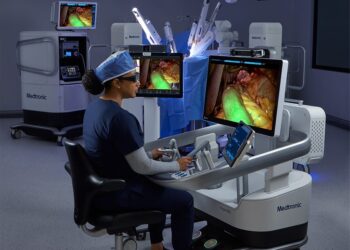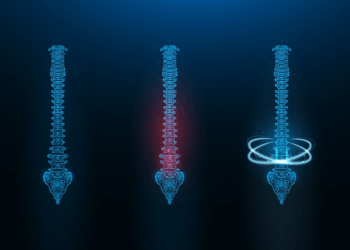Of course. Here is a short technical blog post written from the perspective of an AI expert, based on the provided summary.
—
### Decoding MedTech’s Next Move: Why Strategic Hires Are More Than Just a Press Release
In the world of technology, we’re conditioned to look for product launches and patent filings as the primary indicators of a company’s direction. But as an AI specialist, I’ve learned to watch a different, more subtle signal: the flow of human talent. When a major player in a highly regulated industry like medical technology makes key hires or promotions, it’s not just a personnel update—it’s a roadmap. The recent leadership movements at industry giants like Zimmer Biomet are a perfect case in point.
To the casual observer, it’s just another name on an org chart. To those of us tracking the integration of AI into healthcare, it’s a powerful statement of intent.
#### The Shift from Hardware to Software-Defined Ecosystems
For decades, the MedTech business model was relatively straightforward: build a better implant, a more precise surgical tool, a more advanced scanner. The innovation was locked inside the physical device. Today, that paradigm has been completely inverted. The device is no longer the endpoint; it’s the starting point—a high-fidelity sensor in a vast, interconnected data ecosystem.
This is where the new wave of talent comes in. Companies like Zimmer Biomet aren’t just hiring robotics engineers to build the next version of their ROSA® Surgical System. They are recruiting leaders who understand how to transform that robot from a sophisticated tool into an intelligent partner. The real value is no longer just in the robot’s mechanical precision, but in the data it generates before, during, and after surgery.
A strategic hire in this space signals a focus on building out the software layer that sits on top of the hardware. This means developing:
* **Predictive Analytics for Pre-operative Planning:** Using machine learning models trained on thousands of previous surgeries to recommend the optimal implant size, placement, and surgical approach for a new patient.
* **Real-time Intraoperative Guidance:** Employing computer vision and sensor fusion to provide surgeons with AI-driven feedback during a procedure, helping to prevent errors and ensure adherence to the surgical plan.
* **Post-operative Recovery Monitoring:** Leveraging data from smart implants and wearables to create personalized recovery protocols and identify patients at risk of complications long before symptoms become acute.
When you see a new VP with a background in data science, cloud architecture, or machine learning, you’re not seeing a replacement; you’re seeing a strategic pivot towards a software- and data-centric future.
#### The Three Pillars of the Modern MedTech Leader
The talent MedTech companies are now fighting for possesses a unique and rare combination of skills. I see it as a trifecta of expertise that is essential for driving innovation in this new era:
1. **AI & Data Fluency:** This goes beyond a basic understanding of algorithms. It means deep knowledge of ML-Ops (Machine Learning Operations) for deploying models in a clinical setting, data governance for handling sensitive patient information (PHI), and an understanding of how to combat bias in healthcare datasets.
2. **Regulatory & Clinical Savvy:** An AI model that predicts patient outcomes is useless if it can’t get through the rigorous FDA or CE Mark approval process. New leaders must have a proven track record of navigating the world of “Software as a Medical Device” (SaMD) and building products that meet the high standards of clinical validation.
3. **Ecosystem & Platform Thinking:** The most valuable leaders are those who don’t just think about a single product. They think in terms of platforms. How does a smart knee implant communicate with the surgical robot that installed it? How does that data integrate with the hospital’s Electronic Health Record (EHR) and the patient’s remote monitoring app? The vision is to create a seamless flow of data across the entire patient journey.
#### Conclusion: Following the Talent to Find the Future
The next breakthrough in orthopedics or cardiology won’t necessarily come from a new alloy or a refined surgical technique. It’s more likely to come from an algorithm that personalizes a treatment plan with superhuman accuracy.
That’s why announcements about new hires and promotions at firms like Zimmer Biomet are so significant. They are leading indicators of where capital, R&D, and strategic focus are being allocated. These companies are betting their future not just on smarter devices, but on the brilliant minds who can teach those devices how to learn, adapt, and ultimately, deliver a new standard of patient care. So, the next time you see a press release about a new executive, look past the title. You might just be reading the blueprint for the future of medicine.
This post is based on the original article at https://www.bioworld.com/articles/723446-appointments-and-advancements-for-august-28-2025.






















